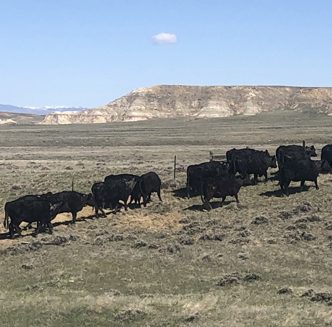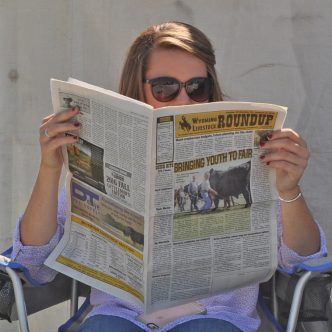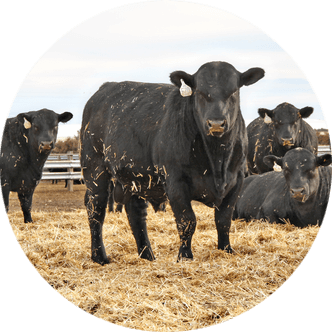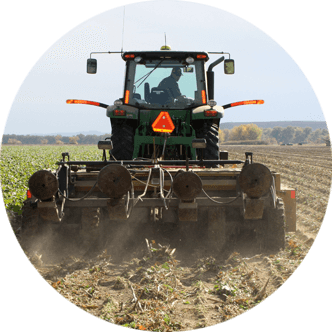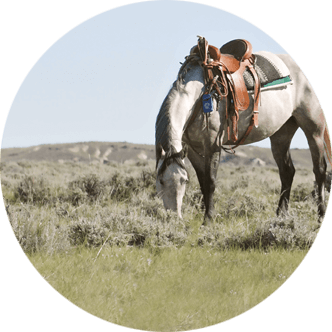Language of the horse: Bill Oliver teaches natural horsemanship techniques for effective equine communication
Wyoming has been Bill Oliver’s home since he was 18 years old, but he grew up in northeastern California, riding in the rugged Cascade Mountains.
“This was what I’d call bridle horse country, which includes southeastern Oregon and the edge of the Great Basin. As a young man, I was exposed to some fine bridle horses and trainers,” Bill shares.
Bill then moved to Wyoming and began guiding, packing mules and training horses for hunting outfitters, where he was taken aback by the heavy influence of outfitting and rodeo on the way horses in the area were broke and trained.
“These horses were not fine-tuned bridle horses,” he notes. “With rodeo, you get into tie-downs and arena performance, which is a lot different from what I grew up with, and many of the horses and mules we worked with as outfitters in the 1980s were purchased out of the kill pens in Billings, Mont. They went right to the trailheads, so they had to be broke quickly, and we got the job done. There were no round pens on the mountainsides, and our task was to make them useful as pack animals or safe to ride.”
“We basically wadded them up, rolled them over and threw them on the ground,” he adds. “It was rough and very old-school.”
Gaining experience
In 1991, Bill had an opportunity to work for the U.S. Forest Service (USFS) running a pack string to take supplies and equipment into the backcountry, often to work on fires.
“We had a big string of mules and packed all through USFS Rocky Mountain Region Two,” he says. “We also did some educational outreach about leave-no-trace camping and gave packing demonstrations.”
Working in the first and oldest U.S. national forest, Bill was on the tail end of a legendary generation – rangers, wildland firefighters, outfitters and ranchers who relied solely on livestock, primitive tools and grit to get the job done.
These men and women cleared trails with crosscut saws, packed dynamite on mules and navigated the wilderness without GPS, cellphones or modern conveniences – just skill, instinct and a deep connection to the land.
Bill was the person who got called in to do difficult packing jobs – wrecked airplanes, lookout towers, etc. in rugged country – mainly in wilderness areas of Wyoming and Colorado.
“I had this job for about three years. I worked nearly every day packing mules in wilderness settings. Then I had a chance to come back to Cody and manage a wilderness and trails program on more than one million acres of wilderness and 1,000 miles of backcountry trails,” he says.
“I had 46 outfitter and guide permits to administer, overseeing a stock program with about 65 horses and mules, which was quite a turnaround after starting wages with an outfitter for $10 a day and room and board,” he adds.
While Bill served as a forest ranger for 22 years, he also started colts and worked with remedial horses.
“I literally made a living horseback, and most of the time it was in remote wilderness settings,” he says. “I had the opportunity to study many great horse handlers, some of which became household names. It opened my eyes to a new way of thinking and the concept of natural horsemanship – a different approach than the forced horse training I was doing before.”
This kicked off 20-some years of discarding the old-school, production-oriented methods and learning from many mentors.
Natural horsemanship
In 2017, Bill’s wife and friends finally convinced him to begin sharing his equine knowledge with the world.
Today, Bill does a lot of in-person clinics, as well as online courses explaining his philosophy and methods. He works with all stages of horsemen, from beginners to advanced trainers and from colt starting to the finished bridle horse.
His definition of “natural horsemanship” is to adapt the way horses interact with each other in a herd.
As prey animals dependent on herd dynamics for survival, horses have a strong flight instinct and communicate to each other through the slightest movements and body language. In a wild herd, one will readily see pressure and release within the “pecking order,” and there is always a matriarch mare who is the dominant leader.
This mare represents safety, discipline and leadership.
The language of movement, energy and feel is universal to all horses, and this mostly nonverbal language is what Bill has honed in on and leveraged for horse training. This is the guiding principle behind all he does.
Bill uses this strategy horseback and in the round pen, taking on the role of the matriarch mare to communicate with the other horse at liberty. Like the matriarch mare in a herd of horses, Bill handles and drives the young horse while he is horseback. This readily breaks down any psychological barriers and establishes dominance and leadership.
It’s a natural way to instill submission in young horses.
By driving one horse with another, he can also get a physical read of the horse. Within a few minutes, he can evaluate the horse and see if it is aggressive, lazy, high-strung, resistant or submissive, which is much more effective than doing the initial work on foot or trying to get on the young horse.
“There’s nothing natural about a predator climbing on a horse’s back. Natural horsemanship, to me, is how one horse communicates with another horse,” he says.
The matriarch mare doesn’t have to get physical very often. She merely has to gesture, and with body language as the psychological upper hand, the subordinate horse moves out of her way.
“She just drops her head and pins her ears back,” Bill notes. “She has established leadership and dominance. In 40-some years of working through all of this in my colt-starting clinics, the main thing that sets me apart in my methods is I do most of my work on horseback and drive colts in the first initial face-up the same way an old matriarch mare would do.”
“A lot of trainers put horses on lunge lines or chase them with flags, running them around, round-penning etc.,” he continues. “But my approach is different. When I start a four-day colt starting clinic, the first thing I do is work all of those colts horseback. I drive them and work on the initial face-up and forward motion. How they drive is typically how they’ll ride. For example, if you are dealing with a big draft cross and he’s lacking in forward motion, I can pretty much bet this is also how he will ride.”
Sharing knowledge
Forward motion is something Bill focuses on when teaching other riders through his educational clinics.
He says, “Some people wonder why it’s so important to work on forward motion, but just like the old matriarch mare, I am pressuring the horse on the shoulder, behind the eye, as I drive and handle it horseback. Throughout the course of the four days, I handle colts so much by horseback that by the time he is ridden, he will respond the same way.”
Bill notes many of those who partake in his clinics are riding their colts by the end of the first day with this method.
Bill handles the first ride from his own horse for the person on the colt.
“I’ve got the colt to where I can move him out with forward motion and rate him, then take him from a walk to a trot and a trot to a lope and rate him back down,” he explains. “I can whistle and move my horse to the inside, using body language just like one horse would do with another, then bring the colt right to the inside, face him up and stop him.”
He notes this is helpful for the first couple rides, as the rider can simply focus on gentling and desensitizing the colt, which creates a very easy transition.
“I am still pretty much handling the colt from horseback and can put him wherever I need to to keep the rider safe,” he continues. “If things start to happen too quickly, I can use body language with my horse, bring the colt to the inside and shut him down.”
“If this doesn’t work, the other option is to drive the colt on his shoulder, push him into the outside of the round pen, which rounds his body and makes it difficult for him to get stiff and straight and try to buck,” he adds.
Bill explains this is the reason for a round pen – to round out a horse so he can only crow hop.
“Unless the horse can come through the middle of the pen and get stiff and straight, it’s very difficult to buck hard,” Bill says.
On the second day of the clinic, Bill will add a snaffle bit into the equation.
“We progressively continue, then by noon on the fourth day, I usually have everybody riding outside – either in a big arena or in the sagebrush around our arena and barn,” he shares. “By this point, the colt is relaxed, and the rider can shut him down on one rein. This usually concludes our four-day colt starting clinic.”
Bill has also created a video series on colt starting which will be released on May 11 at the Mother’s Day Spring Tune-Up Clinic.
He has a couple of other videos already out – one on driving and driving in a round pen, which addresses the matriarch mare idea.
“We have another video on groundwork,” he says. “Both of those are available via our website.”
For more information on Bill Oliver Horsemanship, visit billoliverhorsemanship.com.
Heather Smith Thomas is a corresponding writer for the Wyoming Livestock Roundup. Send comments on this article to roundup@wylr.net.

